When you’re watching a musical, and you start to ask questions like “Why are they dancing here?” or “Why are they singing?”, then obviously something has gone quite wrong. It’s supposed to be a musical after all.
That’s the problem with Damien Chazelle’s hit La La Land, an engaging piece of romantic drama that tries to straddle both campy nostalgia for classic Hollywood musicals and serious dramatic insight into the pitfalls of passion and jazz evolution, and coming off neither really here nor there. In short, the film has no business being a musical.
The director’s Oscar-nominated Whiplash was somewhat of a hybrid of highly inspired filmmaking, madcap black-comedy mayhem and a serious look at obsession that at times overstretched believability. But it is incredibly involving in its drama and character dynamics as well as its journey into the deep intricacies of jazz. It’s fun yet emotionally terrifying, which is what playing jazz feels like.
But Chazelle’s attempt to recapture the joyful innocence and colourful panorama of classic musicals in La La Land comes off as a mere pastiche more than a heartfelt homage. The film, essentially about Sebastian, a jazz pianist, and Mia, an aspiring actress, and their pursuit of their life’s passion, opens with a big musical number on an L.A. highway that involves showy camerawork and what seems like a single take. This is what’s called a set-up, an introduction, but it seems more plonked into the film than a natural part of it.
This is the aforementioned problem – the musical sequences don’t seem to fall into place. In the old musicals, the song-and-dance sequences have a strong logic within the story and their placement is important so that the segue feels seamless. Even Bollywood filmmakers know this. They know it so well that they can even transport the actors to sing in locations that have nothing to do with the rest of the film. And it still feels right.
The most jarring of these sequences in La La Land is when Seb and Mia meet again at a party, and they leave together in a song-and-dance sequence. But why? They’ve only just gotten to know each other a fair bit more, and they still dislike each other. Obviously, the sequence tries to insinuate the tenuous beginnings of their interest in each other, but the symbolism of the act is far less interesting than the distracting dusk view of L.A. in the background.
But for a musical, La La Land has very few song-and-dance sequences. One that works is Mia at an audition where she sings about her aunt who lived in Paris, an emotional moment that feels real with meaningful lyrics … but the song is hardly memorable. All the songs, in fact, are hardly earworm material. It only takes one listen to remember the melody to Singin’ in the Rain, for instance. But even though it’s fairly easy to remember “City of stars … Are you shining just for me …”, damn if I can recall the melody.
There really are two musical sides to La La Land. The other side is that of jazz that is closely tied to the effective drama unfolding without the song-and-dance. Seb wants to open a jazz bar where the traditional, straightahead style of jazz can be preserved and played every night. It’s Seb’s dream that begins to unravel his budding romantic relationship with Mia as he makes a compromise and joins an electronic soul-pop band headed by his friend Keith, played by singer John Legend. The tension that builds climaxes in a quiet, palpable strain between them that is like the opposite of the frantic, manic explosions of rage in Whiplash. It’s so controlled, so internalised, that it proves Chazelle’s deft handling of the dramatic material and shows up his weak grasp of the musical side of things.
But even so, Ryan Gosling’s character is more of a caricature of a diehard jazz fan. The scene where he tries to convince Mia of the greatness of jazz is totally laughable for a real jazz fan, as Seb spews a torrent of cliches about how jazz music is created in the moment, how the musicians take risks on stage, how they’re composing the music as they play, creating something new every night, and so on and so forth.
Sebastian, in fact, is an asshole. He gives Mia the finger when they meet on the highway for the first time. He is uppity about being made to play A Flock of Seagulls’ I Ran at a party, because, you know, he’s a serious jazz musician. In short, he is that annoying elitist who apparently wants to “save jazz” from being bastardised into something Louis Armstrong won’t even recognise. If by now, you’re thinking “Wynton Marsalis,” you’re quite right! Seb even dresses in suit and tie for gigs, like one of those Young Lions of the 1990s. But even the Young Lions have moved on to other things, with some like Joshua Redman making some of the most experimental and out-there music.
But accusations of Sebastian having a White Saviour Complex is far from accurate. He’s probably a stand-in for Chazelle himself who might have been a failed jazz musician. The thing about jazz is, anyone who professes a great love for it will almost always have aspirations to live the life of playing jazz every night. But Chazelle’s jazz politics is completely wrong. Jazz is not about form. It’s about spirit – the spirit of improvisation. That’s why jazz is so malleable; it can easily be assimilated into any other form of music, and vice versa. Pat Metheny once mixed blues, jazz, the gamelan and Chinese opera into a single composition.
But the jazz idea that Chazelle presents in the film is an elitist’s wet dream of a music that never changed since Thelonious Monk and Charlie Parker, and a nightmare for the rest of us jazz fans who understand the spirit. Heck, even Bird once recorded a pop album (with strings, gasp!) produced by none other than Norman Granz.
Had Chazelle been more insightful about this aspect, he would have made a more interesting film about driving passion, rather than what ended up as a wannabe musical that offers up a simplistic take on passion, ambition and compromise.
La La Land wants to capture and preserve the spirit of old, yet its contemporary origins can’t seem to be suppressed enough or seek a good enough compromise for its ambitions to be effectively realised. Ironically, that’s the same dilemma Sebastian faces.

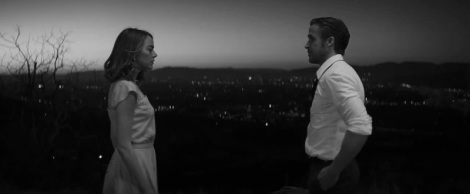
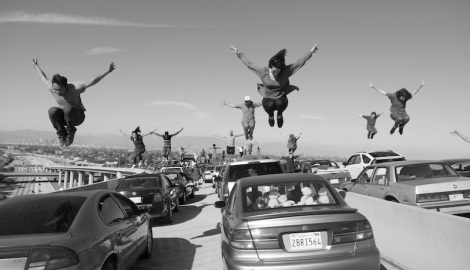
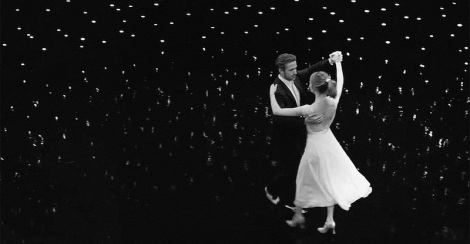
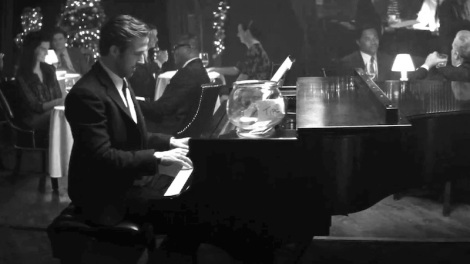
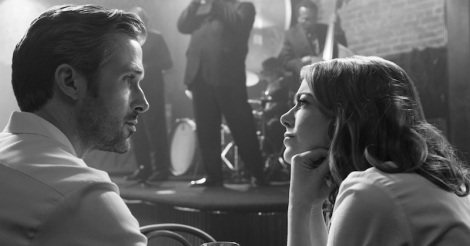

I’m with you on this. I am a big, big fan of Broadway musicals and the old MGM stuff. This film is a nice try but there’s nothing in it anywhere near, say, “Good Morning,” from Singin’ in the Rain. Probably an unfair comparison because how many Gene Kellys are there? So while I think this movie is pretty good and has a certain charm, it’s also wildly overrated. Neither of these stars can sing or dance and the opening number is more frantic than inspired.
All that said, I’m glad somebody’s at least trying to make musicals. But frankly, I enjoyed Fox TB’s version of Grease more than this.
LikeLike
Hi Jim,
Yes, La La Land is not a bad film at all, but just the musical bits don’t quite work. And exactly as you said, Kelly, Astaire, etc they were dancers and performers, not just actors. i believe if you want to make a musical like that, you need trained people, not actors that you put through dance lessons. Thanks for reading!
LikeLiked by 1 person
Totally agree! I was thinking that I was alone. Thank you Jim.
LikeLiked by 1 person
Yeah, I can’t believe it got 14 Oscar nominations. That ties it with Ben Hur and All About Eve! Have they lost their minds? Wildly overrated.
LikeLiked by 1 person
My bad. It was actually Titanic and All About Eve.
LikeLike